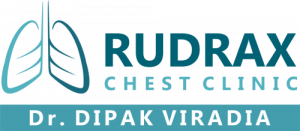
Swine flu, also known as the H1N1 virus, is a relatively new strain of an influenza virus that causes symptoms similar to the regular flu. It originated in pigs but is spread primarily from person to person.
Swine flu made headlines in 2009 when it was first discovered in humans and became a pandemic. Pandemics are contagious diseases affecting people throughout the world or on multiple continents at the same time.
When it first emerged, swine flu was most common in children 5 years and older and young adults. This was unusual because most flu virus infections are a higher risk for complications in older adults or the very young. Today, risk factors for getting swine flu are the same as for any other strain of the flu. You’re most at risk if you spend time in an area with a large number of people who are infected with swine flu.
Some people are at higher risk for becoming seriously ill if they’re infected with swine flu. These groups include:
- adults over age 65
- children under 5 years old
- young adults and children under age 19 who are receiving long-term aspirin (Bufferin) therapy
- people with compromised immune systems (due to a disease such as AIDS)
- pregnant women
- people with chronic illnesses such as asthma, heart disease, diabetes mellitus, or neuromuscular disease
Swine flu is caused by a strain of influenza virus that usually only infects pigs. Unlike typhus, which can be transmitted by lice or ticks, transmission usually occurs from person to person, not animal to person.
You can’t catch swine flu from eating properly cooked pork products.
Swine flu is very contagious. The disease is spread through saliva and mucus particles. People may spread it by:
- sneezing
- coughing
- touching a germ-covered surface and then touching their eyes or nose
The symptoms of swine flu are very much like those of regular influenza. They include:
- chills
- fever
- coughing
- sore throat
- runny or stuffy nose
- body aches
- fatigue
- diarrhea
- nausea and vomiting
Most cases of swine flu don’t require medication for treatment. You don’t need to see a doctor unless you’re at risk for developing medical complications from the flu. You should focus on relieving your symptoms and preventing the spread of the H1N1 to other people.
Two antiviral drugs are recommended for treating swine flu: the oral drugs oseltamivir (Tamiflu) and zanamivir (Relenza). Because flu viruses can develop resistance to these drugs, they’re often reserved for people who are at high risk for complications from the flu. People who are otherwise generally healthy and get swine flu will be able to fight the infection on their own.




